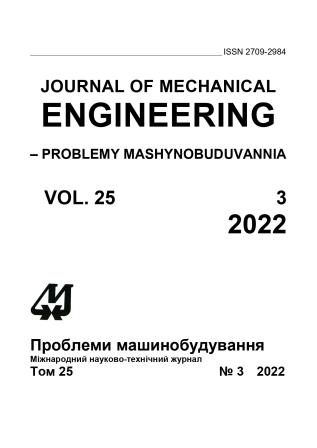Енергоекологічна оцінка котельного устаткування модернізованого на базі струменево-нішевої технології
Анотація
У статті наведено результати енергоекологічної оцінки котельного устаткування промислового призначення, обладнаного струменево-нішевою технологією спалювання. Наголошено, що до основних принципів, покладених в основу даної технології, відносять такі, як: раціональний розподіл палива в потоці окисника; стійка регульована структура течії палива, окисника і продуктів згоряння; саморегульованість складу паливної суміші в зоні стабілізації факелу при зміні навантаження агрегату. Підкреслено, що станом на сьогодні за допомогою струменево-нішевої технології модернізовано велику кількість промислового газоспалюючого устаткування, як-от: котли, печі, сушарки, об’єкти металургії та ін. Констатовано, що результати промислового впровадження технології дозволили накопичити значний обсяг технічної інформації й дали можливість зробити попередню екологічну оцінку при проведенні модернізації газоспалюючого устаткування. Як показує практика, на сучасному етапі основним напрямом вдосконалення технології є поліпшення її екологічних показників. У роботі встановлено вплив основних режимних і технічних параметрів вогнетехнічного обладнання на його емісійні показники. Доведено, що існує можливості зниження оксидів азоту первинними технологічними методами, найпростішим й найефективнішим з яких вважається введення газів рециркуляції у топковий простір. За результатами аналізу емісійних показників модернізованого вогнетехнічного обладнання потужністю 0,5–60 МВт отримано дані для оцінки емісійних показників котлів малої та середньої потужності залежно від основних впливових факторів, а саме: від типорозміру агрегату, коефіцієнта надлишку повітря й навантаження котла, а також враховано вплив введення газів рециркуляції у топковий простір на рівень концентрації оксидів азоту. Підтверджено ефективність застосування схеми введення газів рециркуляції в потік первинного повітря і переваги в порівнянні з технологіями спалювання на базі вихрових пальників. За результатами промислового експерименту встановлено енергетичну ефективність запропонованих заходів на прикладі залежностей ККД від навантаження котлів ПТВМ-50 і КВГМ-20.
##submission.downloads##
Опубліковано
Номер
Розділ
Ліцензія
Авторське право (c) 2022 М. З. Абдулін, О. А. Сірий, О. О. Кобилянська

Ця робота ліцензується відповідно до Creative Commons Attribution-NoDerivatives 4.0 International License.
Автори, які публікуються в цьому журналі, погоджуються з наступними умовами:
- Автори залишають за собою право на авторство своєї роботи і передають журналу право першої публікації цієї роботи на умовах ліцензійного договору (угоди).
- Автори мають право самостійно укладати додаткові договори (угоди) з неексклюзивного поширення роботи в тому вигляді, в якому вона була опублікована цим журналом (наприклад, розміщувати роботу в електронному сховищі установи або публікувати в складі монографії), за умови збереження посилання на першу публікацію роботи в цьому журналі.
- Політика журналу дозволяє розміщення авторами в мережі Інтернет (наприклад, у сховищах установи або на персональних веб-сайтах) рукопису роботи як до подачі цього рукопису в редакцію, так і під час її редакційної обробки, оскільки це сприяє виникненню продуктивної наукової дискусії і позитивно позначається на оперативності та динаміці цитування опублікованої роботи (див. The Effect of Open Access).

